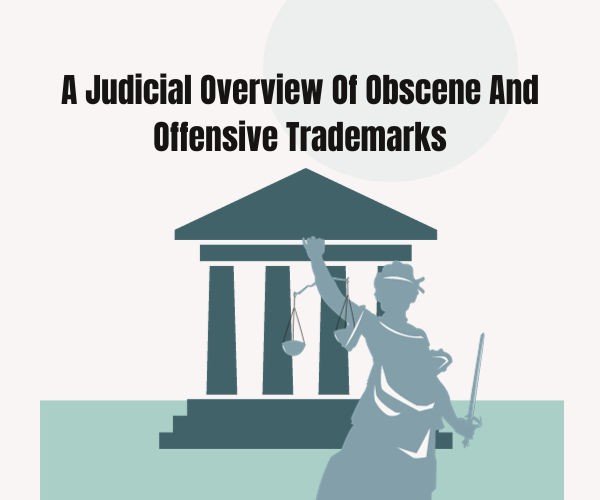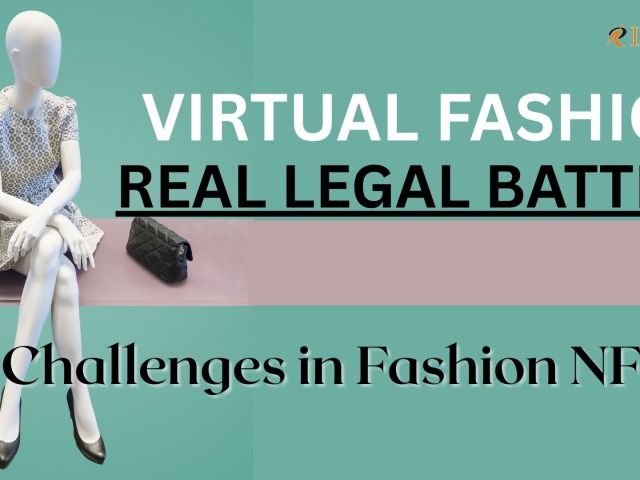Introduction
Section 9 of the Trademarks Act, 1999 (hereinafter referred to as the Act), provides for absolute grounds for refusal of registration of the trademark. The Examiner can object to the registration of the trademark if it falls within any of the grounds mentioned in Section 9. Section 9 (2) of the Act provides as follows:
2) A mark shall not be registered as a trademark if—
(a) it is of such nature as to deceive the public or cause confusion;
(b) it contains or comprises of any matter likely to hurt the religious susceptibilities of any class
or section of the citizens of India;
(c) it comprises or contains scandalous or obscene matter;
(d) its use is prohibited under the Emblems and Names (Prevention of Improper Use) Act, 1950
(12 of 1950).
Clause (c) provides that if the mark contains scandalous or obscene matter it cannot be registered. In other words, the trademark examiner can object to its registration. Any mark that is contrary to public morality or conventional societal norms constitutes an absolute ground for refusal of registration.
This provision has garnered much scrutiny and deliberation by the courts of various jurisdictions. At issue is what exactly constitutes ‘scandalous and obscene’ in any given case. The Act does not define the term ‘scandalous and obscene’, as the matter is a question of fact not a question of law. It depends on the facts and circumstances of each case, and several factors must be considered. The only fixed criteria are the conventional moral norms of society at a particular point in time. The Draft Manual for Trademark Practice and Procedure, 2015 (hereinafter ‘the Manual’), provides that the mark must not be merely distasteful, but would cause public outrage and significantly undermine religious, social, and family values. The outrage must also be amongst an identifiable section of the public.
The Manual also provides that the examiner must be objective. This does not entail the examiner being a trendsetter nor should he be out of date, but must be sensitive to public opinion. However, what constitutes public morality is not always easy to determine, and it is even less certain when dealing with the facts and circumstances that are peculiar to a case.
Mapping Positions across US, UK and India
United States
In the United States, the position with respect to obscene and offensive trademarks is by and large similar to the Indian position.§ 2 (a) deals with obscene and scandalous material in the marks and § 1052 (a)provides that any trademark that ‘may disparage or falsely suggest a connection with persons, living or dead, institutions, beliefs or national symbols, or bring them into contempt or disrepute’ can be denied registration.In re Fox, it was held that if a substantial portion of the general public perceives a scandalous meaning in a mark, then it can its registration can be objected to, even if it was not the primary or even the most relevant meaning of the mark. Public morality as a standard or criteria was reaffirmed in various cases: in re Runsdorf,in re Luxuria, and in re Mavety Media.In Joseph Matal v. Simon Tam, Simon Tam’s band, ‘The Slants’, was denied trademark registration because the USPTO deemed the name was likely to disparage those of Asian descent. The US Court of Appeals held that the disparaging clause violates free speech as per the First Amendment. The clause facially discriminates based on viewpoint, and viewpoint discrimination is unconstitutional. It extended the First Amendment to commercial speech as well. In the case of Iancu v. Brunetti, this ratio was reaffirmed that ‘scandalous’ and ‘obscene’ are viewpoint-based and violate the First Amendment.
United Kingdom
In the United Kingdom, the law governing the registration of trademarks is substantially similar to its Indian counterpart, in that it prohibits the registration of any mark that is contrary to public order and morality. In the case of Scranage, the Appointed Person eligible to deal with grievances related to trademark registration held that the word mark that was claimed (‘FOOK’) was likely to cause outrage against a significant section of the public.
India
The Indian courts have dealt with the question of what constitutes ‘obscene’ and ‘scandalous.’ In the case of Ranjit D. Udheshi v. State of Maharashtra, the Supreme Court adopted the Hicklin test. The Hicklin test laid down in R v. Hicklinheld that ‘obscene’ means any material that tends to corrupt the minds of those who are open to such immoral influences, regardless of its artistic/literary merit. Even if the material only forms a section of the material, it can be considered obscene. In the case of Aveer Sarkar v. State of West Bengal, the Supreme Court adopted the community standard test, holding that the impact on the community as a whole must be looked into. However, the context of the material is important to ascertain whether or not the material is ‘obscene’. In the present case, the issue was with respect to a photograph of a nude woman. The court held that merely because it is a nude photograph, it is not necessary for it to be considered ‘obscene’. It held that the picture should be suggestive of a depraved mind and designed to excite sexual desire. The posture and the background of the woman depicted in the photograph must be looked into. The present photograph was depicted the way it was to critique racism. Therefore, the court held that such images need not be considered obscene. In this, the court rejected the Hicklin test and held that the context of the material is important. In the case of Maqbool Fida Husain v. Raj Kumar Pandey, the appellant had painted the portrait of a nude woman in anguish under the name ‘Bharat Mata’. It was put in a charity event that was organizedfor those affected by the earthquake in Kashmir. The court while determining whether this picture was obscene or not, held nudity by itself cannot be construed as ‘obscene’. The portrait must have the tendency to excite overt sexual desire, which on the face of it, the portrait in question did not do. In the case of S. Rangarajan v. Jagjivan Ram,the Supreme Court held that the standard must be that of an ‘ordinary person of common sense and prudence’ and not that of a hypersensitive person. Related to this is a complaint filed by Naaz Patel of Avest Foundation an NGO, for the logo of Myntra (the stylized letter ‘M’ in the logo) that appeared to be offensive to women. The Mumbai Cyber Crime Police department on receipt of the complaint mailed Myntra of the issue, due to which the logo was changed. This may have clearly qualified as a hypersensitive observation on the part of Naaz Patel and not the test of an ordinary person of common sense and prudence.
Comclusion
With respect to the Indian judicial landscape, courts have consistently applied the community standard test, to determine whether certain material is obscene or not. However, it has been contended that it is not always practicable to determine the conventional moral norms of society with some degree of certainty. In the case of Miller v. California, it was held that public morality is unascertainable and hypothetical. This is probably more relevant in the Indian context, granted the diverse cultural and moral norms varying from region to region across the country. Critics of legal moralism may contend that because public morality as a standard is not certain because it is difficult to ascertain what public morality is in different cases, the refusal of registration would be arbitrary and would violate free speech under Article 19 of the Constitution (as was held in Joseph Matal v. Simon Tam). It could also result in a delay in adjudicating the case since standards are not certain and different courts may adopt different standards in ascertaining whether or not a mark is obscene or not.In the case of TATA Press Ltd. v. Mahanagar Telephone Nigam Ltd., it was held that free speech extends to commercial speech as well. However, it is not clear if it would apply to trademarks specifically. More pertinent is the exclusion of moralityciting free speech as a reason in defining ‘obscene’ and is hardly a viable approach. An instance where the mark is sexually overt or offensive to a certain class of persons would certainly be contrary to public policy to register such marks. What is required is a more coherent, predictable, and certain standard that would not lead to arbitrary rejections of registrations that are tailored to the whims and caprices of a certain group or section of society (as in the case of Myntra) but at the same time not exclude public sensitivities and the moral norms of a significant and identifiable section of society.
*Written by Jonah Jesuraj Sanctus, Legal Intern @Intepat IP




